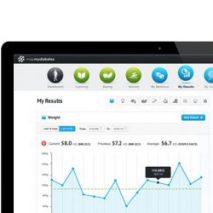Rather than fill your brains with technical nonsense, we like to think of the illumo digital blog as a sanctuary for business-minded people. Part of that means braving the dungeons of clunky jargon on your behalf to show you the real business value of technology. So, more about SaaS, PaaS, IaaS, etc. later. First, let’s step a quick step back.
The internet is, as its name hints, a network. A very, very big network. Technically you can touch it, but despite its vastness and pervasiveness, it may as well be invisible. This makes it hard to describe, which is why we have the term ‘cloud’ to describe whichever chunks of the internet we wish to use for our own personal, business or public purpose.
Cloud computing is a consumption model
Now you’ve already heard of cloud, and likely have a grasp of what it consists of. But forget the technology gubbins for a moment. Cloud computing is a top-down delivery mechanism or, if you prefer, distribution system. It’s a way of consuming IT.
Before the cloud, your business IT consisted entirely of what you bought, built and housed on-premise at your own trouble and expense. Now, cloud represents a swathe of options for IT (from a little bit to pretty much everything) that you can get instead ‘as a service’.
As jargon goes, ‘as a Service’ needn’t be a pain in the aaS
Jargon, eh? It’s hard enough when it’s just an abbreviation. HDMI, USB, the list goes on, but at least each one gives your ear a letter-by-letter clue to what the heck it codifies.
Acronyms, on the other hand, are just too clever for their own good. RAM, COTS, DOS, SOAP… This is jargon designed by people – let’s call them jargonauts – with too much time on their hands, mangling meanings up until a convenient word drops out.
And the defining achievement of the jargonauts is the collection of mispronounceables ending in ‘aaS’. These include:
- Infrastructure as a Service (IaaS)
- The basic building blocks of IT infrastructure rented as a service over the internet from someone’s cloud, somewhere. Typically includes servers, storage, processing power, other infrastructure components available in very scalable units of consumption, on-demand, in volumes you could never conceivably exhaust.
- If traditional on-premises IT were like making your own movie from scratch, IaaS would be the ability to rent studio space and camera equipment to give you a head start.
- Platform as a Service (PaaS)
- A bit more sophisticated than IaaS, this is a hosted cloud environment for developing and deploying your software applications. The idea is that the intricacies of architecting and managing production and testing environments for software are taken away, making it easier to concentrate on the software development itself.
- Continuing the movie-making analogy, PaaS is like renting all the props, costumes and technicians to go with the studios and equipment so you can concentrate solely on writing the script and acting it out.
- Software as a Service (SaaS)
- The top of the cloud computing value chain, this is where a complete software solution that has already been created is delivered to you as a subscription model. You don’t purchase the software, host it yourself or even need to stay on top of loading updates – it’s just there. The downside is that – like any off-the-shelf software offering, it won’t have been developed to your unique needs.
- In our movie-making analogy, SaaS is the equivalent of simply watching the finished product on Netflix.
Another truly wonderful way of understanding the aaS minefield is through this pizza-as-a-service analogy originally dreamt up by an IBM executive. On-premises IT is 100% scratch-cooking (and you even have to grow you own tomatoes and make cheese from your cows’ milk), while IaaS is more akin to buying a frozen pizza and baking it at home. The PaaS model takes care of the cooking part for you, much like a takeaway, while the SaaS approach means you don’t even have to sit at your own dining table, because you’ve gone to the restaurant instead!
Cloud computing offers a multitude of benefits, not least removing the burden from owning and operating very complex IT infrastructure. Skills are increasingly hard to come by, and the opex economics of cloud are highly compelling. This perfect storm makes ‘aaS’ opportunities hard to ignore – so make sure you understand them!

